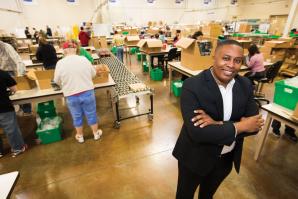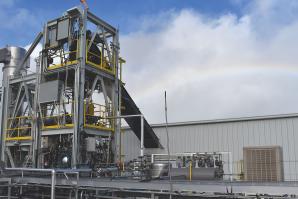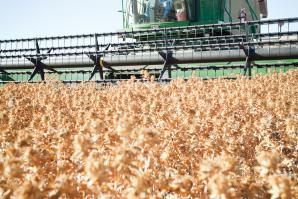It’s a crisp winter morning in Sacramento, but the sun is shining — and it’s heating up stir-fry, soup, cookies and cinnamon rolls in solar cookers outside the office of Solar Cookers International, the world’s leading organization on solar cooking, based locally since 1987. Steam rises from the stir-fry and rolls out of the box cooker baking sweets. It seems counterintuitive on such a cold morning, but that’s the power of the sun.
Accessible to everyone, the sun could potentially transform the lives of nearly 40 percent of the world’s population who depend on fuelwood (such as firewood and charcoal) to cook food. That practice destroys habitat and when wood is burned it pollutes the atmosphere with carbon dioxide, a major contributor to climate change and respiratory disease. The nonprofit SCI is using new technology and research and advocacy to bring solar cookers to more parts of the world that experience energy poverty. Lack of access to modern energy services affects more than 3 billion people, according to SCI.
SCI’s work to reduce dependency on fuelwood could have far-reaching global economic impacts. Improved human health, decreased health care costs and premature mortality rates, and reduced environmental and climate impacts work to stabilize countries and bolster gross domestic product. Those outcomes are reinforced by the United Nation’s Sustainable Development Goals established at the Paris Agreement in 2015 to end poverty, empower all people, address climate change and fuel economic growth.
Building Better Cookers
Caitlyn Hughes, executive director of Solar Cookers
International, stands behind a parabolic solar cooker as stir-fry
cooks on a crisp winter morning in Sacramento. (Photo by Jennifer
Berry)

SCI uses community-based programs to spread solar cooking in high-needs regions and solicit feedback and collaboration. That’s led to an essential shift from looking at solar cooking as a universal technology that spans geography and culture to one that is culture-specific, accounting for a region’s climate, the foods people cook and how they prepare them.
“If you’re in Nepal or India, being able to fry foods like a chapati is really important, then you’re going to want something like the parabolic (cooker) that gets to those really high temperatures,” says Caitlyn Hughes, SCI’s executive director. “If you’re cooking soups and stews, the box cooker can work well.”
The organization is working to expand the focus of community-based programs — like the one in Kakuma Refugee Camp in Kenya — through local manufacturing. “Local production is really important because the repairs and the ability to scale are there in the community,” Hughes says. “People have ownership over that knowledge, which is so important for long-term success.”
Innovation is fueling the momentum. In 2018, SCI launched its Performance Evaluation Process, a scientific test that measures and standardizes the cooking power of solar cookers in watts. That gives solar technology accountability and enables government and community leaders to make informed choices with confidence in the ability of cookers.
The testing device measures the temperature inside the cooker, ambient temperature, wind speed and the radiance of the sun, using ISO-compliant standards for testing cook stoves. It’s portable and small enough to fit in a carry-on suitcase, says Alan Bigelow, SCI’s science director, making testing feasible around the world. To date, seven of more than 125 manufacturers have committed to testing their cookers.
With special consultative status to the United Nations’ Economic and Social Council, SCI saw a wealth of untapped opportunities to build global capacity and scalability. It joined the UN’s High-Level Political Forum, where countries gather annually to discuss the UN’s 17 Sustainable Development Goals in 2016 and the UN’s annual Climate Change Conference. The HLPF is a key conversation for SCI to be a part of, Bigelow says, because solar cooking positively affects all 17 goals, and from a climate perspective it’s a free, zero-emission energy solution.
Rose Bazile, a nurse from Haiti, spoke during the conference about the energy challenges Haitians face and the health impacts of cooking over open fires. She’s seen the influence solar cooking has in her country and tells her own story of strapping her solar cooker filled with food to the roof of her car, which cooks as she drives. Halfway through her journey, she stops to eat a fully cooked meal.
A Need for Large-Scale Programs
Caitlyn Hughes, executive director of SCI, prepares to pull a
dish of hot cinnamon rolls from a box cooker. (Photo by Jennifer
Berry)

And people are listening. For example, Angeline Heine-Reimers, the energy planner for the Republic of the Marshall Islands, is in conversations with SCI to bring local production to the region that has limited energy options. Collaboration with organizations like International Solar Alliance and others that work with the Green Climate Fund are underway. Those connections could lead to opportunities to scale solar cooking — including large-scale programs that can cook more than 1,000 meals a day.
While more than 3.9 million solar cookers have been identified in 83 countries to the benefit of more than 14 million people, only two of 135 countries in the Paris Agreement listed solar cooking as a primary method to reach their sustainability goals. SCI expects that will change due to advocacy efforts with the UN.
In February, SCI released a report with statistics on cooking food for all 195 countries in the world. It identified, when available, the state of reliance on solid fuels and associated deaths and environmental impact, as well as the present and potential influence of solar cooking. For example, China has the potential to save nearly $500 billion annually if solid fuel cookers switched to solar cooking a quarter of the time.
That detail — to promote solar cooking a quarter of the time — may be key, as there are challenges to scaling solar cooking globally. Tom Price, an independent clean energy expert who spent the last two years working in Rwanda with the company Inyenyeri on clean cooking solutions says, while solar cooking works for some, it doesn’t accommodate the schedules of many who work until the sun goes down and return home to cook dinner when it’s dark. Nor can it be used on cloudy or rainy days. That’s a problem for regions like East Africa with the monsoon season that lasts for four months, says Price.
While there are a number of cookers to better align with the requirements of cooking different foods, Price says “the challenge is that you can’t really control the temperature of the solar cooker … so it doesn’t lend itself to actual interventions by the cook” to accommodate the different kinds of dishes one may want to make.
Reaching those who need assistance most can be problematic, Price says. “It’s not available to the poor people and if it’s affordable, it’s because there’s some kind of subsidy involved and subsidies aren’t scalable. Poor countries can’t afford to pay for interventions for the majority of their people.”
Despite the challenges, the roots of solar cooking’s success is found among those whose lives are transformed. “When you actually see someone try solar cooked food for the first time, it’s something very special,” says Bigelow. “They realize, wow, the sun’s energy cooked that food I just ate and it’s clean, there’s no smoke in the air, and the fuel was free.”
—
Stay up to date on business in the Capital Region: Subscribe to the Comstock’s newsletter today.
Recommended For You

Rapid Success
Chris Johnson is an impatient inventor with a purpose
Chris Johnson is the inventor of Rapid Ramen Cooker, a square, microwaveable bowl that cooks ramen in four minutes. What he evidently lacks in patience, he makes up for in ingenuity.

Recycling: Turning Trash Into Energy
FastOx gasification could be the solution to our recycling crisis
Every year, the United States generates around 260 million tons of trash. And no one knows what to do with it. No one, that is, except serial entrepreneur Mike Hart, the CEO of Davis-based Sierra Energy.
Part of this month’s Innovation issue

Sun Farm Squabble
Are solar projects right for Yolo ag land
Yolo County is doubly blessed. Within its boundaries lie some of the nation’s richest farmland; the open expanses also make it a prime place to develop solar energy.



